Hungary was a part of the modern Olympic movement from the very beginning. Dr Ferenc Kemény was a founding member of the International Olympic Committee in 1894, representing Hungary. Shortly afterwards, on 19 December 1895, the Hungarian Olympic Committee was formed under Kemény's leadership.

The seven founders of the International Olympic Committee in Athens at the 1896 Olympics. Sitting from left to right: P. Coubertin (French), D. Vikelas (Greek), General Butovsky (Russian). From left to right: W. Gebhardt (German), J. Guth-Jarkowsky (Czech), Ferenc Kemény (Hungarian), General V. Balck (Sweden) (Source: József Keresztényi: Az Olimpiák története)
Few people may know that Budapest was also considered as a possible host for the first modern Olympics in 1896. Budapest would have liked to host the Olympics in conjunction with the National Millennium of 1896. However, documents later revealed that Coubertin had only hinted at the possibility to force the slow-to-react Greeks to begin Olympic preparations.
.jpg)
Dr Ferenc Kemény (1860-1944), one of the founders of the International Olympic Committee and the founder of the Hungarian Olympic Committee (Source: József Az Olimpiák története)
At the time, Budapest, of course – as most major European cities – lacked the venues required to organise mass sporting events accessible to the general public, but this was a challenge all organising countries had to deal with this. Despite all this, Hungarian athletes entered the first Olympics in a wide variety of sports, achieving numerous victories. Alfréd Hajós was a standout performer, who as an architect, later created several designs for the Budapest Olympic Stadium.
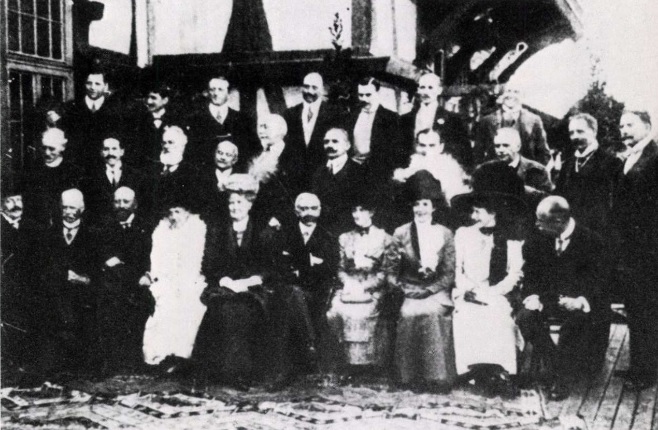
Attendees of the 1911 IOC meeting, in the middle: Coubertin with his wife on Margaret Island (Source: József Keresztényi: Az Olimpiák története)
The 1916 Olympics were the first which Hungary had a realistic chance of organising. The 8 February 1911 issue of Ujság reported on a speech given by Gyula Muzsa, president of the Hungarian Olympic Committee at the time: "Hungarians must not only work hard because of the Stockholm Olympiad but to prepare the ground and ensure that Hungary, and its capital, Budapest, organise the 1916 or 1920. Olympiad."
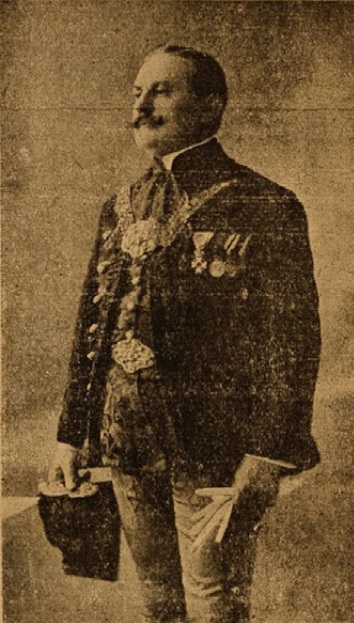
Gyula Muzsa, co-president of the Hungarian Olympic Committee between 1907 and 1927 (Source: Sport-Világ, February 5, 1912)
However, the 1912 Stockholm Olympics highlighted that Budapest was not yet prepared to host an event of this volume, as it had neither a national stadium nor a regular swimming pool that met expectations. The periodical Érdekes Újság reported on 3 August 1913 that although Hungarian swimming was world-renowned, the Hungarian delegation had stood no chance in Stockholm, because there was no regular swimming pool in Budapest, only a short 20-metre one in Rudas. "Rudas Bath's 20-metre swimming pool is for children, not competitors. In it, a swimmer's development is pushed in a detrimental direction because the frequent turns improve pushing of the wall, not swimming." The report shows that although a 33-metre pool was built in 1912, the real first swimming pool in Budapest was built by the Újpesti Torna Egylet ('Újpest gymnastics society') in the bay next to Népsziget a reached 100 metres.
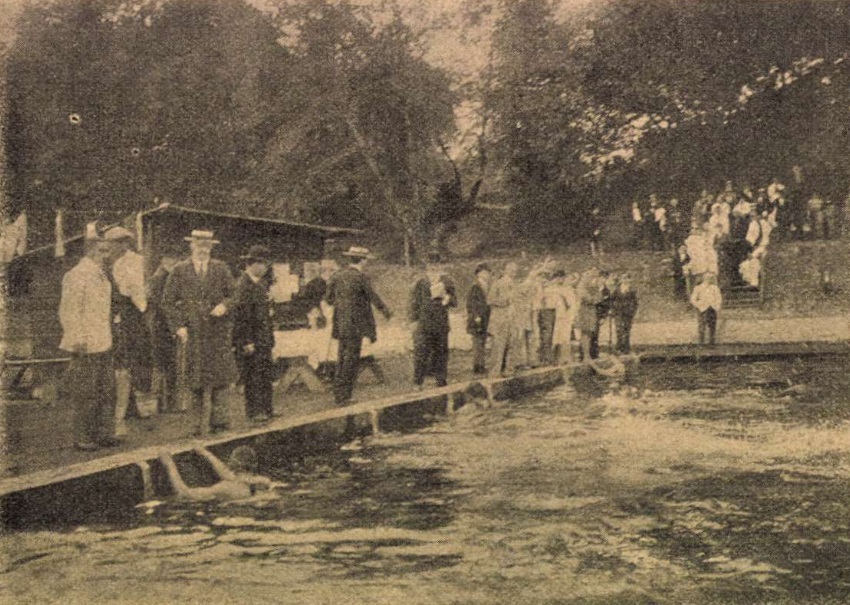
The Újpest swimming pool built in 1913 (Source: Az Érdekes Újság, 3 August 1913)
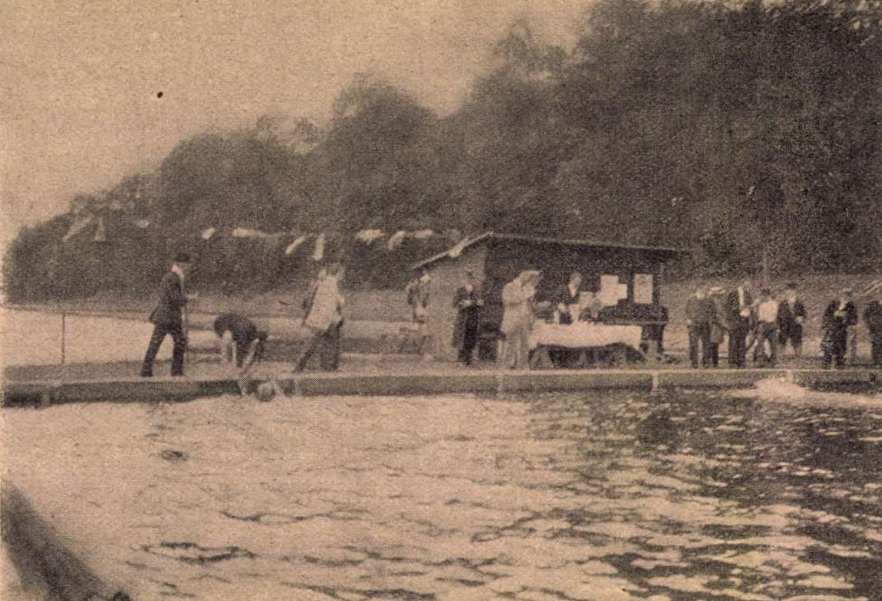
The Újpest swimming pool built in 1913 (Source: Az Érdekes Újság, 3 August 1913)
Eventually, Berlin one the right to host the 1916 Olympics. This led the people of Budapest to realise that plans had top made and construction had to begin if they hoped to be strong contenders for the 1920 event. Everyone involved agreed that the stadium should be built close to nature, in an area with clean air, making Buda the primary target. Gyula Muzsa believed that Vérmező would be the best location, but Alfréd Hajós and János Villányi created plans for the stadium to be built in place of the Pest horse racing circuit which was moving to a new location. The design for the area delineated by present-day Dózsa György Road, Thököly Road and Stefánia Road was presented on 16 December 1913.
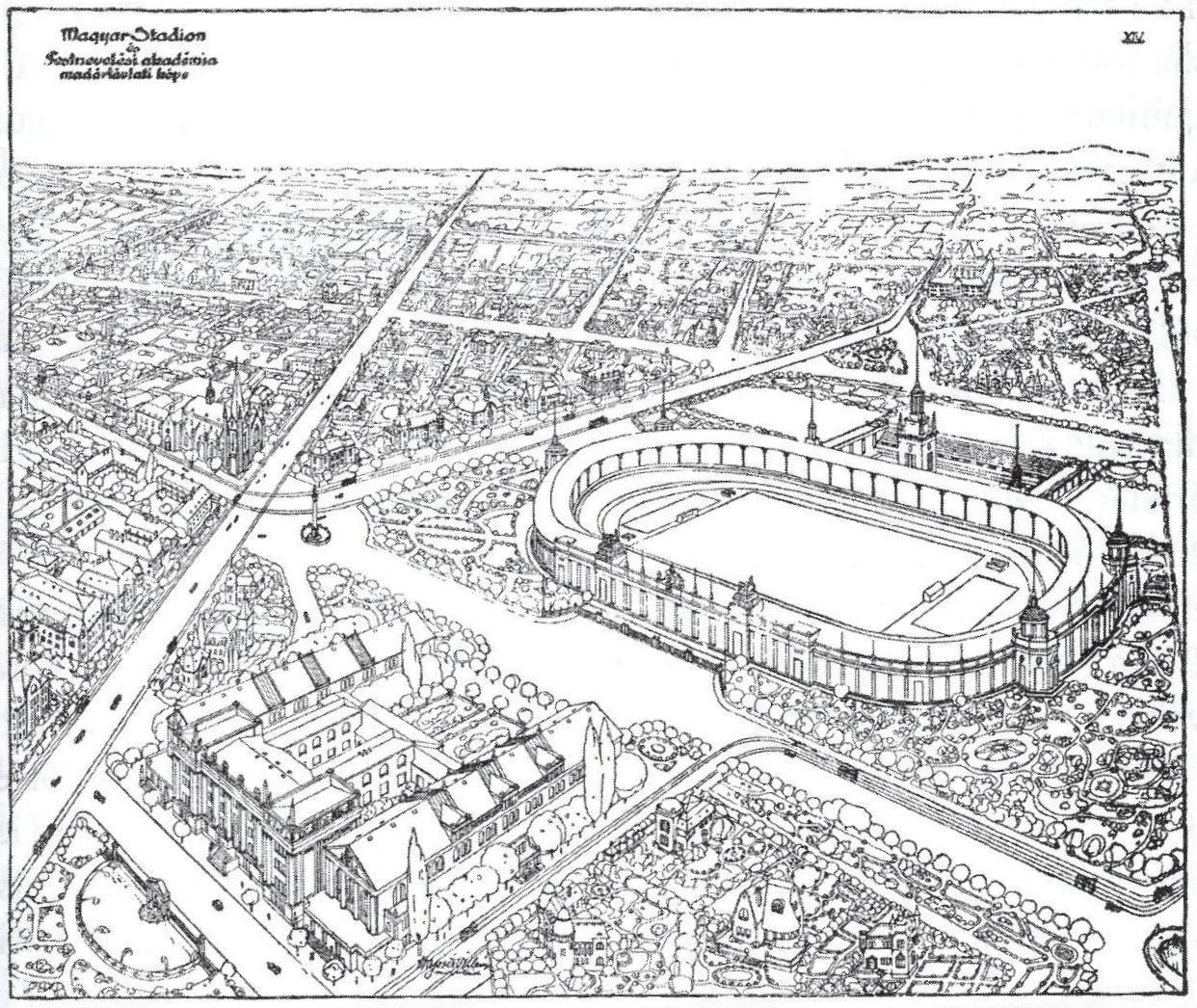
Alfréd Hajós' and János Villányi's 1913 plan for the National Stadium and the Academy of Physical Education near the old horse racing circuit (Source: Miklós Zeidler: A labdaháztól a népstadionig)
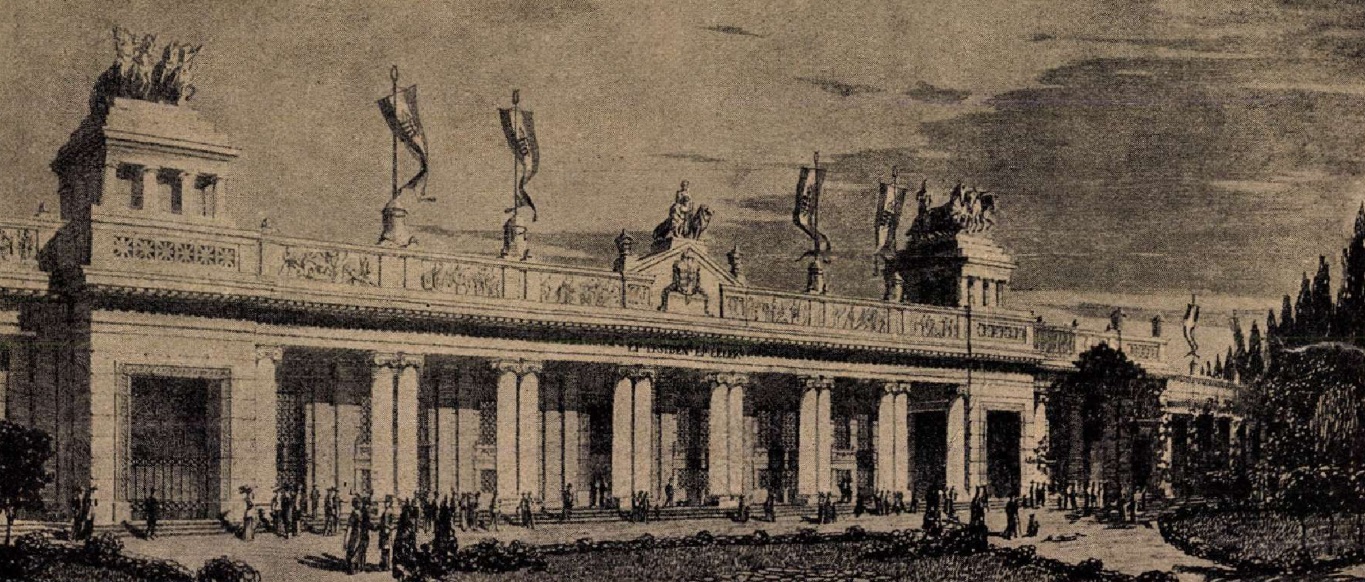
Roman-styled facade designed for the Hungarian stadium in 1913 (Source: Az Érdekes Újság, 4 January 1914)
According to the plans, the stadium would have had a 75 by 112-metre grass pitch, surrounded with a 400-metre slag running track and a 500-metre bike track. The stands would have fit thirty thousand people and could also have been expanded to house fifty thousand. A 50x20-meter indoor pool and a 100-meter open-air swimming pool with stands for 6,000 people were also planned alongside the stadium. In addition, several balconies and marathon towers were included in the plans as was a two-story Academy of Physical Education, which would have housed the College of Physical Education.
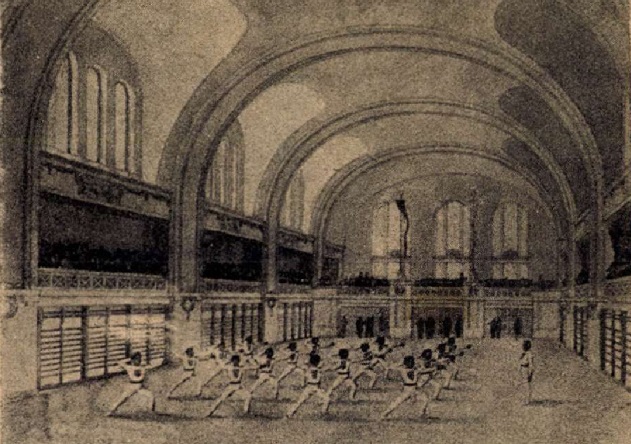
Plan of the gymnasium (Source: Az Érdekes Újság, 4 January 1914)
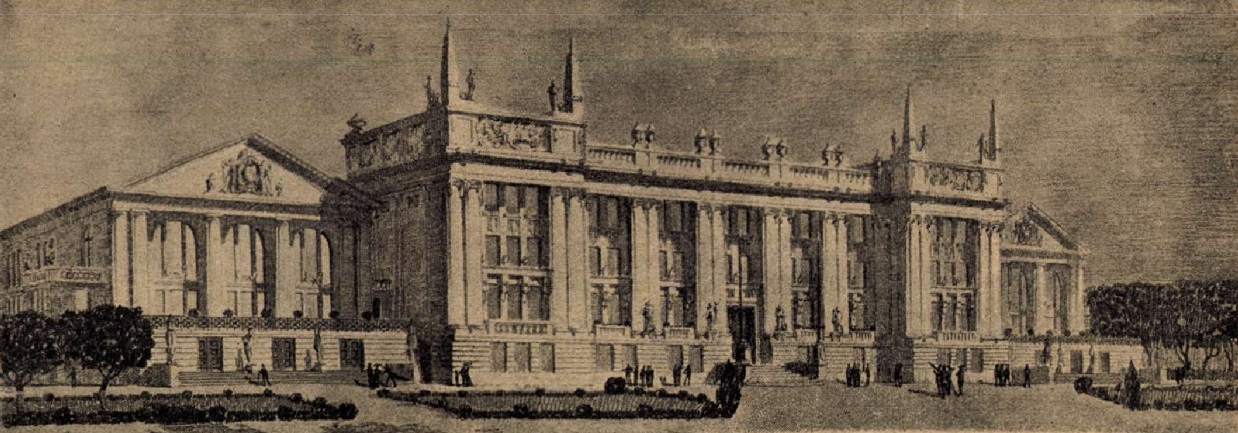
The planned facade of the Academy of Physical Education (Source: Az Érdekes Újság, 4 January 1914)
Several other locations for the stadium were also considered, one of these was Lágymányos (between the present-day Pteőfi and Lágymányos Bridges), Aquincum, and the vicinity of the new Rákos Horse Racing Track. However, the plans remained only ideas, as financial backing was limited. That is why the Ministry of Culture reminded the premiers of Budapest in February 1914 that a Budapest bid for the 1920 Olympics would only be considered if the construction area had been finalised and construction begun by 1915.
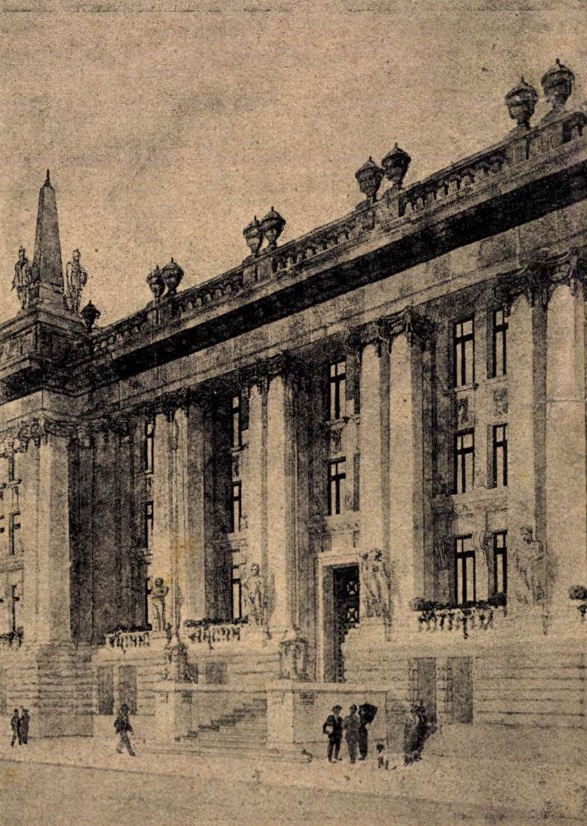
The main entrance of the planned Academy of Physical Education (Source: Az Érdekes Újság, 4 January 1914)
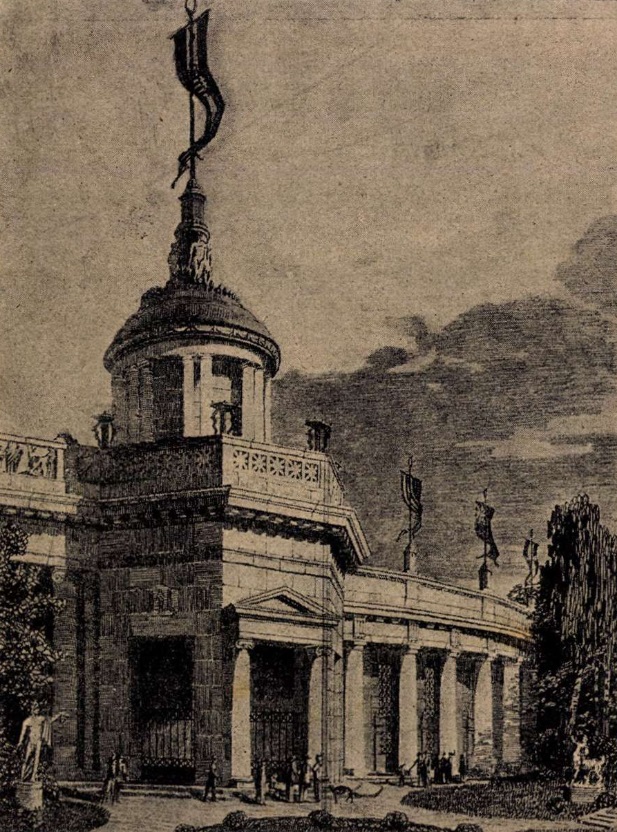
The planned arcade of the Academy of Physical Education (Source: Az Érdekes Újság, 4 January 1914)
Despite the fact that Budapest did not have finished plans – contrary to Antwerp – the city was awarded the right to host the 1920 Olympics at the IOC meeting on 20 June 1914, mainly due to the diplomatic capabilities of Gyula Muzsa. A few days later, the Hungarian public had accepted that the Olympics would take place in Budapest in a mere six years as fact. The press began to urge that the nation come together and begin the great work of organising the Olympics. The 29 June 1914 issue of Sporthírlap said: “So down with the guns. All selfish interests must be put aside before the great goal, this gigantic work.”
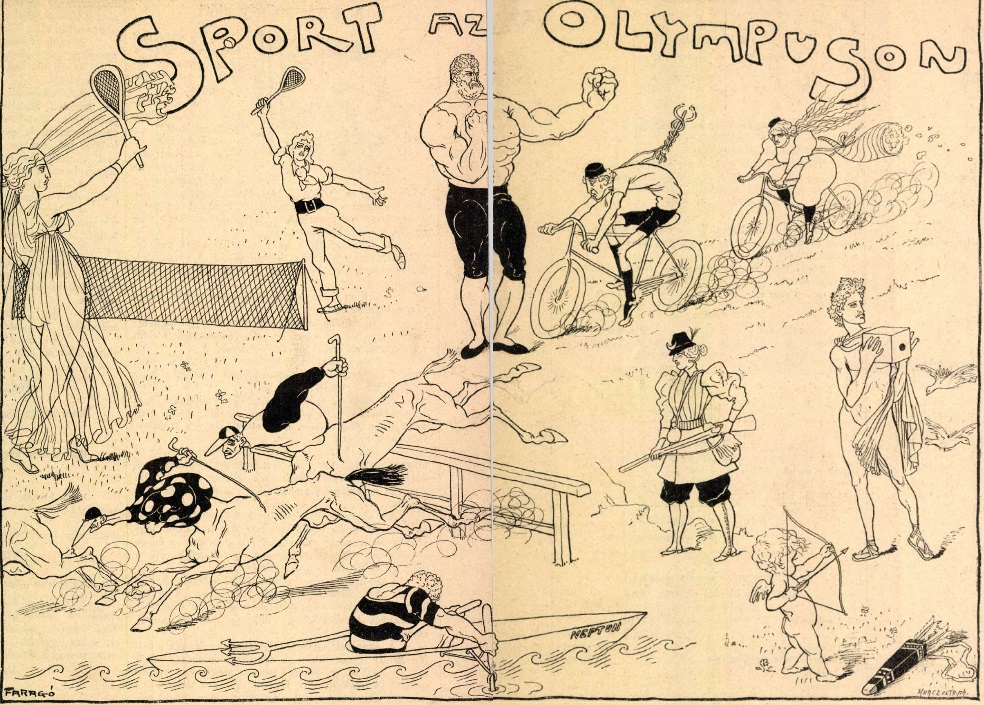
Caricature of the first Olympics (Source: Borsszem Jankó, 19 April 1896)
At that time, they did not yet know that weapons would only truly be raised by men and states in the coming months. Only eight days after Hungary won the right to host the Olympics, the heir to the throne, Franz Ferdinand, was shot dead in Sarajevo on 28 June. A month later, on 28 July 28 1914, World War I broke out, rewriting everything.
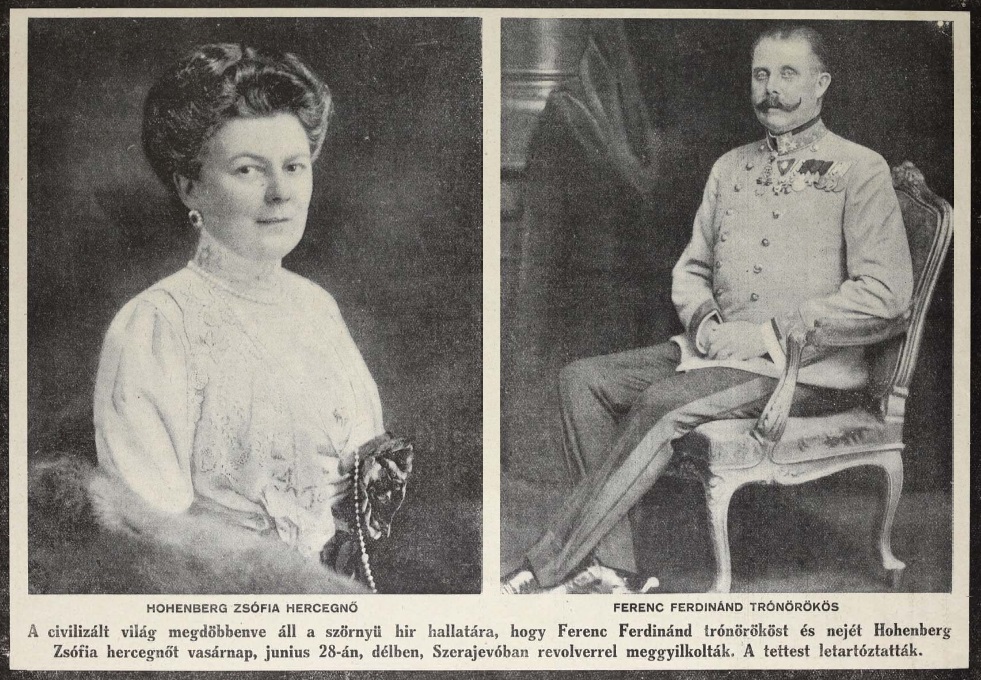
Almost all newspapers reported the sad news of the assassination in Sarajevo (Source: Tolnai Világlapja, 5 July 1914)
After the war, in 1919, plans to build a large national stadium were again raised, but in reality, there was no funding for such a project. The 17 March 1919 issue of Sport Hírlap wrote of the plans: "A stadium built in Budapest will call attention to the development of our sports, and then we will not have to quarrel and plead with the members of the Olympic Committee to win a Budapest Olympiad." Even in July 1919, Alfréd Hajós spoke about the 1920 Budapest Olympics being possible if the stadium could be built at a rapid pace. "Quickly with the construction, as it is already the middle of summer and this time next year the Budapest Olympic Games will be in full swing," he wrote in the 13 July 1919 issue of Sport Hírlap.
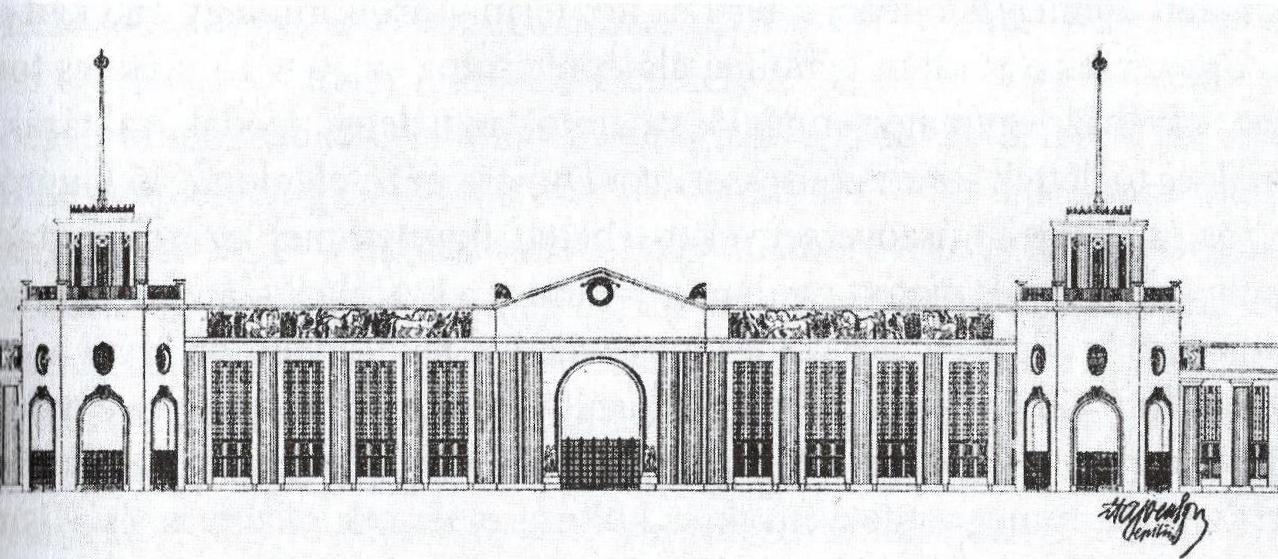 Greek-style facade designed for the Stadium on Margaret Island by Alfréd Hajós in 1919 (Source: Tanulmányok Budapest Múltjából 26., 1997/14.)
Greek-style facade designed for the Stadium on Margaret Island by Alfréd Hajós in 1919 (Source: Tanulmányok Budapest Múltjából 26., 1997/14.)
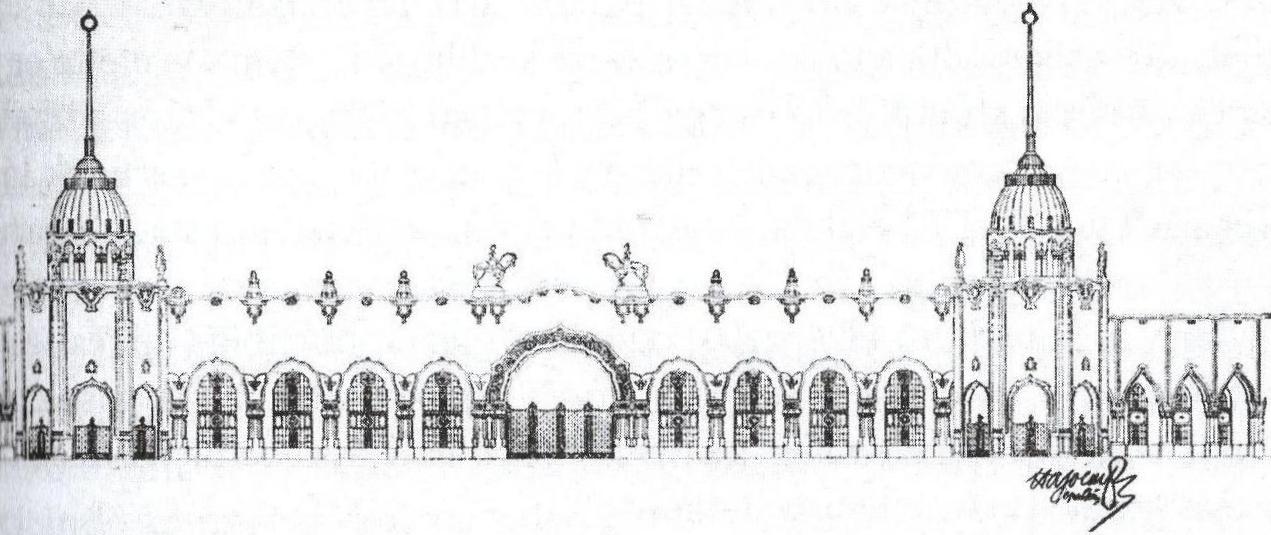 Hungarian-style facade designed for the Stadium on Margaret Island by Alfréd Hajós in 1919
Hungarian-style facade designed for the Stadium on Margaret Island by Alfréd Hajós in 1919
(Source: Tanulmányok Budapest Múltjából 26., 1997/14.)
However, even the new plans remained sketches. The 1916 Berlin Olympics were cancelled, and the right to host the 1920 Olympics was handed to Antwerp. Hungary, alongside the other loosing powers, was not even invited to the games. However, following the Treaty of Trianon, the Olympics were perhaps the least of the country's problems.
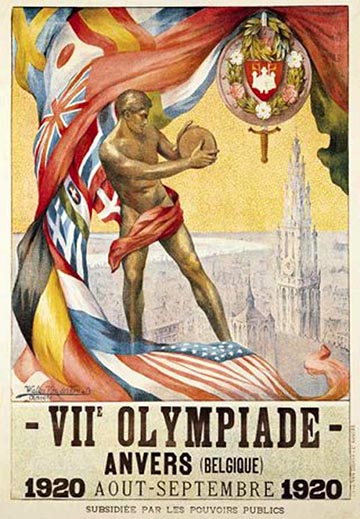
Poster for the Antwerp Olympics from 1920 (Source: mult-kor.hu)
There were various plans for a Budapest Olympics over the following years and decades. A year after the 1920 Olympics, a grandiose plan was penned based on the ideas of Károly Langer and Manno Leonidas, which aimed to design a huge sports park for all sports on Szúnyog Island in Újpest, also known as Népsziget. However, these plans also failed eventually. However, the Olympic boathouses were built, making them the only standing proof of the Olympic fever that gripped Hungary in the 1920s.

Detail of a map sketch of the planned sports park published as an appendix to the book A Nemzeti Stadion ügye
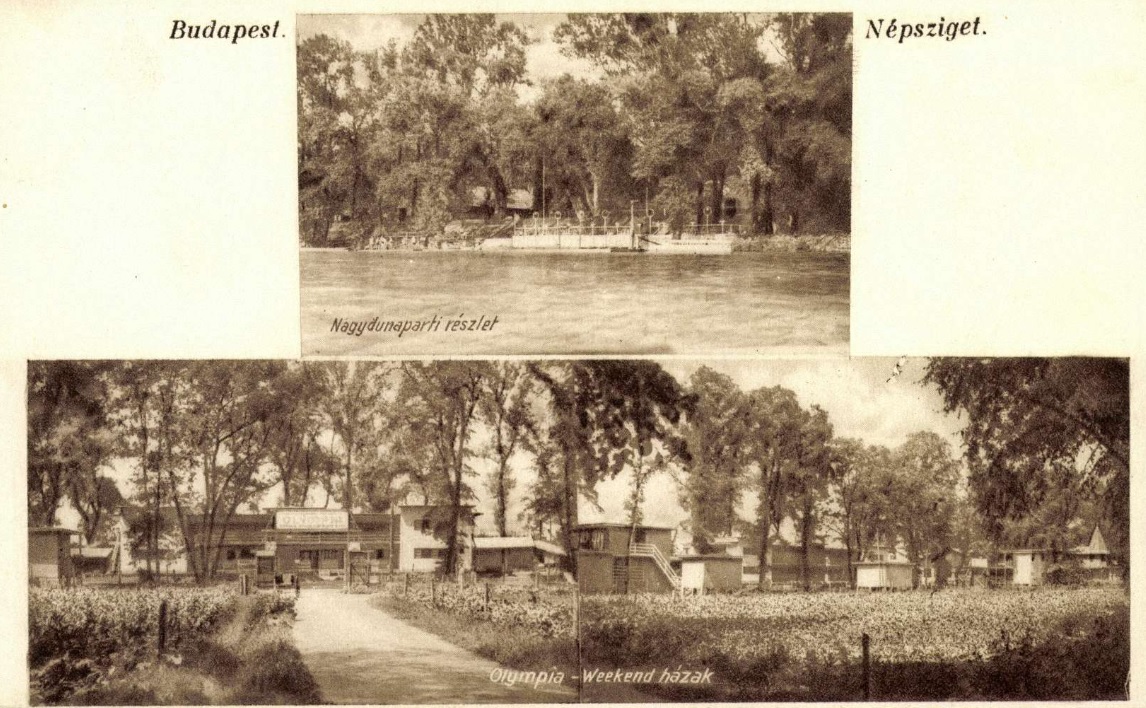
The completed Olympic boathouses as weekend houses on Népsziget in the 1930s (Source: Zemplén Museum / Hungaricana)
Although the Budapest Olympics were never realised, Népsziget became a home for those training and playing various sports, or looking to relax and unwind in the interwar years due to the boathouses planned for the Olympics. Since then, a national swimming pool and stadium have been built. While the city may not have been able to host the Olympics a hundred years ago, they will hopefully visit Budapest once, so these structures can proudly house the five-ring games.

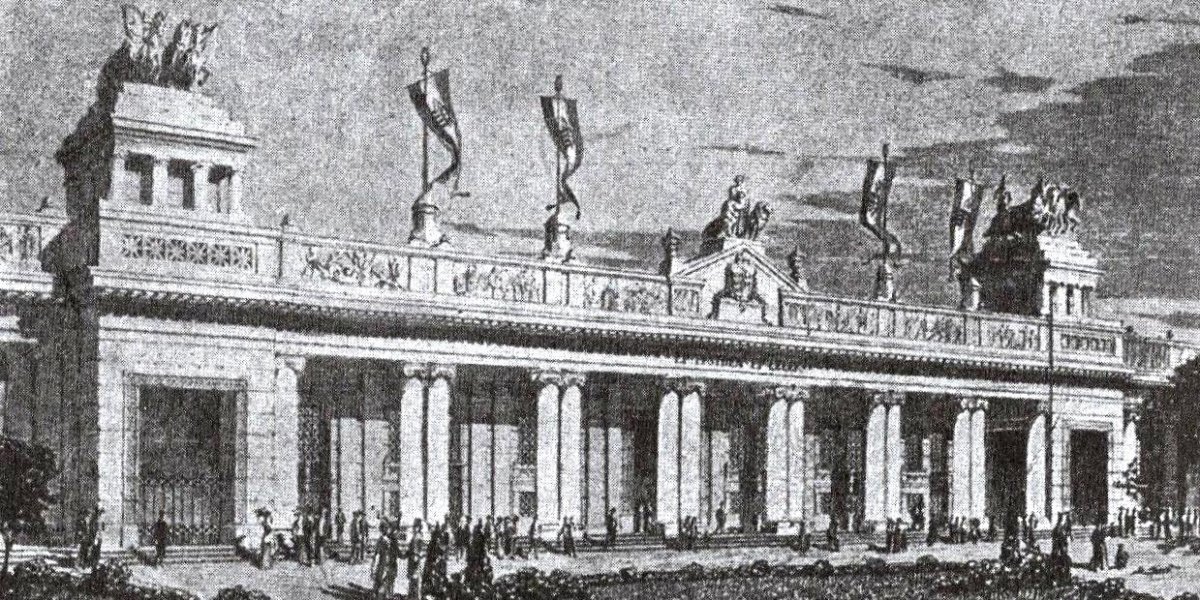

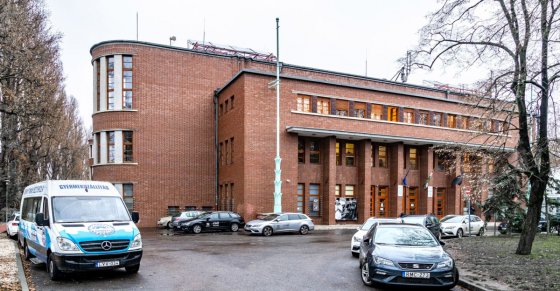



































Hozzászólások
Log in or register to comment!
Login Registration